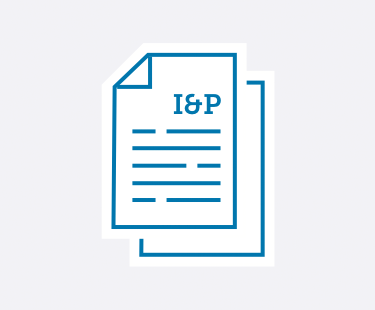

Learn practical strategies to handle emerging trends and leadership challenges in private schools.
No matter if you’re a School Head, Admission Director, Development Director, Board member, or any other private school administrator—Ideas & Perspectives®, ISM’s premier private school publication, has strategic solutions for the pervasive problems you face.
- Tuition not keeping pace with your expenses? In I&P, explore how to use strategic financial planning to create your budget and appropriately adjust your tuition.
- Enrollment dropping off? Discover how to implement the right admission and enrollment management strategies that engage your community—and fill your classrooms.
- Trouble retaining teachers? Learn how you can best support your teachers using ISM’s Comprehensive Faculty Development framework. Your faculty members will become more enthusiastic about their roles—which ultimately improves student outcomes.
- Fundraising campaigns not as successful as you’d hoped? Implement ISM’s practical advice and guidance to build a thriving annual fund, construct an effective capital campaign, and secure major donors—no matter your community size or location.
- Not sure how to provide professional development—for you and your staff? Learn ways to develop and fund a successful professional development strategy. You can improve teacher-centered satisfaction and growth, which in turn strengthens student-centered learning.
- Problematic schedule? You can master the challenges of scheduling with the help of ISM’s practical advice, based on our experience with hundreds of schools and our time-tested theories.
- And so much more.
I&P has shared targeted research, up-to-date insight, and sound theory with school leaders since 1975. More than 8,500 private school decision-makers find the answers to their schools’ administrative and governance matters in our advisory letter. We give you the strategic answers you need.
As an ISM Silver or Gold member, you not only receive issues online and in print 10 times a year, but you have access to 900+ articles in our web archive. Need help? It’s at your fingertips! Learn more and sign up for ISM's membership here.
Search
See the articles from our latest issue of Ideas & Perspectives.
Influencing Upward: Skills for the Development Director
Volume 35 No. 6 // April 19, 2010
The relationship that you, as the Development/Advancement Director, have with your School Head can be a complicated and confusing one. There are five major reasons for this. Few Heads have any background in development. They tend to reach their position because of their academic background, not development experience. Few development people, on the other hand, have much background in education. They typically come from the nonprofit sector, or they start as parent volunteers and graduate to become staffers, with little formal training in the nuances of fund raising at private-independent schools.
1. Already a member? Click here to login.
2. Not a member? Click here to become a member.
3. Not sure? We'll help you figure it out.
The 21st Century School: Students and Individualized Instruction
Volume 35 No. 6 // April 19, 2010
In a previous I&P article, ISM focused on the use of technology to revolutionize the architecture that supports the delivery of education to students. In this article, we expand on the idea of individualizing instruction, and include an example from a student’s point of view. This leads to the fourth characteristic of 21st Century Schools noted in an earlier article—the individualization of the content and delivery of curriculum, meeting the needs and passions of the learner at the rate and speed best suited to that learner, using blended learning.
1. Already a member? Click here to login.
2. Not a member? Click here to become a member.
3. Not sure? We'll help you figure it out.
The Board Policy Manual
Volume 35 No. 5 // April 1, 2010
As President of your school’s Board of Trustees, you are always mindful of the need to perpetuate Board memory—historical information about the Board’s operations and activities. Even with reasonably effective new-member orientation and continuing, annual professional development of the Board, turnover will mean that, in a few years, the majority of the Board will rely on second-hand information about “how the Board does things.” That is, Trustees will not have experienced the passage of some pivotal Board policies and/or a discussion about the Board’s strategic operation. When they join the Board, the new Trustees will be relying on what they “heard” from the more experienced Board members.
1. Already a member? Click here to login.
2. Not a member? Click here to become a member.
3. Not sure? We'll help you figure it out.
The 21st Century School: Students
Volume 35 No. 5 // April 1, 2010
The 20th Century School treats learning in the same way an automobile manufacturer treats making cars. Every student (worker) is assigned particular times (clocking in) and places (workstations) where his/her teachers (supervisors) deliver common curricula (assembly lines) to meet commonly agreed standards (quality control). Teachers who attempt to make the “system” more humane and effective for students are in danger of stunting their careers and being considered troublemakers. Vaunted ideals of life-long learning, independence, and creativity so prized in students (at least in theory), are not as valued in teachers for whom conformity is a critical norm.
1. Already a member? Click here to login.
2. Not a member? Click here to become a member.
3. Not sure? We'll help you figure it out.
Influencing Upward: Advice for the Head’s Direct Reports
Volume 35 No. 5 // April 1, 2010
In thinking about your relationship as a direct report to your School Head, an essential career skill involves understanding how to influence upward. Whether you’ve known your Head for a long or short time, and however you came to your position, delivering the mission of the school to the students requires an effective relationship between you and the School Head. Reflecting on how you can effectively carry out your responsibilities is worthwhile. (From the Head’s point of view, this article may be helpful as you consider how to coach your direct reports—whether they are new to the business of management/leadership or experienced in their roles—so that they know your expectations.)
1. Already a member? Click here to login.
2. Not a member? Click here to become a member.
3. Not sure? We'll help you figure it out.
Scheduling and the Harried Teen
Volume 35 No. 4 // March 15, 2010
As the administrator in charge of the high school schedule, you have a moral responsibility. The schedule is not a neutral instrument, but one that dictates and sanctions the lives of children. Think about the way in which your students are living in your school—particularly the driven students.
1. Already a member? Click here to login.
2. Not a member? Click here to become a member.
3. Not sure? We'll help you figure it out.
Terminating At-Will or Under Contract: Fairness and Due Process Are What Count
Volume 35 No. 4 // March 15, 2010
“We’re in an at-will state. We can let someone go at any time for any reason.” “We simply didn’t renew their contract. We don’t need to give a reason.” While these refrains—heard from school administrators on a regular basis—are both true as far as they go, they don’t tell the whole story regarding the risks of dismissing an employee at a private-independent school.
1. Already a member? Click here to login.
2. Not a member? Click here to become a member.
3. Not sure? We'll help you figure it out.
Family Satisfaction and Retention in the Current Economic Climate: 2010
Volume 35 No. 4 // March 15, 2010
ISM recently conducted its second annual nationwide survey of parents of children attending private-independent schools. Again this year, the survey was designed to address school concerns about the current economic situation and the effect it might have on re-enrollment. A total of 11,385 people responded; last year, there were 13,291 responses.
1. Already a member? Click here to login.
2. Not a member? Click here to become a member.
3. Not sure? We'll help you figure it out.
The 21st Century School: Curriculum and Technology
Volume 35 No. 3 // February 18, 2010
The 20th century curriculum paradigm was dominated by the power (and needs) of publishers who took a considerable amount of time to develop textbooks and drove a profitable mass market in educationally acceptable knowledge. The 21st century curriculum paradigm is far more anarchic, with “textbook” knowledge being accessible and created through “social production”2 (collaborative work with open platforms) and largely available for free.
1. Already a member? Click here to login.
2. Not a member? Click here to become a member.
3. Not sure? We'll help you figure it out.
‘Priority’ Students: The Unpleasant Side of ‘Demand in Excess of Supply’
Volume 35 No. 3 // February 18, 2010
One of second-tier markers of the ISM Stability Markers® is “demand in excess of supply.” While it would be desirable for every grade to be described this way, ISM has always viewed this Marker as critical when it describes the situation at the school’s traditional “entry” grades (e.g., pre-kindergarten, sixth, ninth)—the first grade of the school and the grade(s) where it expands, either through attrition or by design, the number of seats available for new students.
1. Already a member? Click here to login.
2. Not a member? Click here to become a member.
3. Not sure? We'll help you figure it out.


